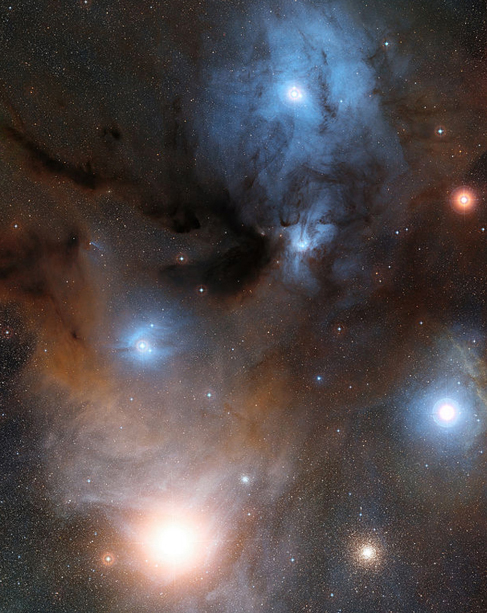| << Chapter < Page | Chapter >> Page > |
By the end of this section, you will be able to:
Astronomers refer to all the material between stars as interstellar matter; the entire collection of interstellar matter is called the interstellar medium (ISM) . Some interstellar material is concentrated into giant clouds, each of which is known as a nebula (plural “nebulae,” Latin for “clouds”). The best-known nebulae are the ones that we can see glowing or reflecting visible light; there are many pictures of these in this chapter.
Interstellar clouds do not last for the lifetime of the universe. Instead, they are like clouds on Earth, constantly shifting, merging with each other, growing, or dispersing. Some become dense and massive enough to collapse under their own gravity, forming new stars. When stars die, they, in turn, eject some of their material into interstellar space. This material can then form new clouds and begin the cycle over again.
About 99% of the material between the stars is in the form of a gas —that is, it consists of individual atoms or molecules. The most abundant elements in this gas are hydrogen and helium (which we saw are also the most abundant elements in the stars), but the gas also includes other elements. Some of the gas is in the form of molecules—combinations of atoms. The remaining 1% of the interstellar material is solid—frozen particles consisting of many atoms and molecules that are called interstellar grains or interstellar dust ( [link] ). A typical dust grain consists of a core of rocklike material (silicates) or graphite surrounded by a mantle of ices; water, methane, and ammonia are probably the most abundant ices.

If all the interstellar gas within the Galaxy were spread out smoothly, there would be only about one atom of gas per cm 3 in interstellar space. (In contrast, the air in the room where you are reading this book has roughly 10 19 atoms per cm 3 .) The dust grains are even scarcer. A km 3 of space would contain only a few hundred to a few thousand tiny grains, each typically less than one ten-thousandth of a millimeter in diameter. These numbers are just averages, however, because the gas and dust are distributed in a patchy and irregular way, much as water vapor in Earth’s atmosphere is often concentrated into clouds.

Notification Switch
Would you like to follow the 'Astronomy' conversation and receive update notifications?